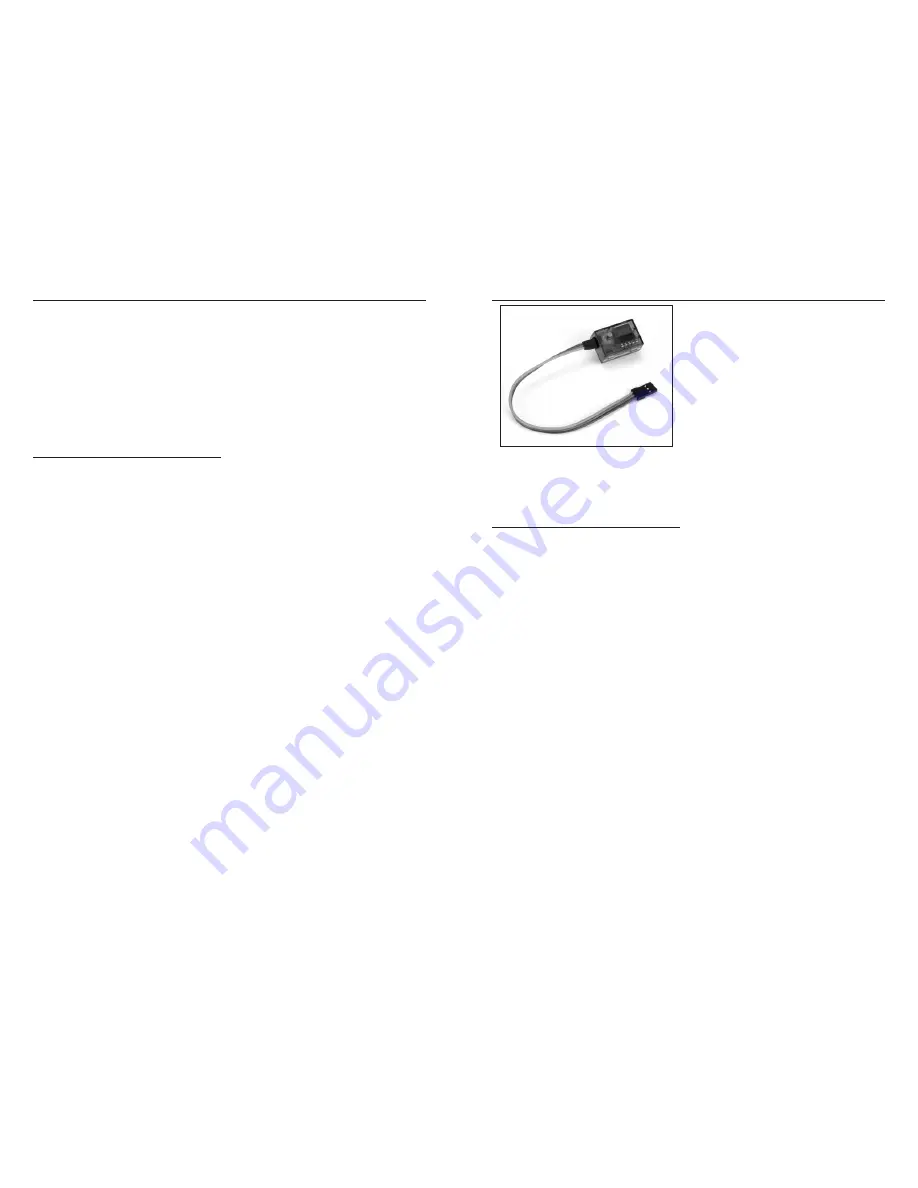
G-22
G-23
While the above Standard Range Testing procedure is
recommended for most sport aircraft, for sophisticated
aircraft that contain significant amounts of conductive/
reflective materials (e.g. turbine-powered jets, some
types of scale aircraft, aircraft with carbon fuselages, etc.)
the following advanced range check will confirm that all
internal and remote receivers are operating optimally
and that the installation (position of the receivers) is
optimized for the specific aircraft. This Advanced Range
Check allows you to evaluate the RF performance of each
individual internal and remote receiver and to optimize the
locations of each individual remote receiver.
Advanced Range Testing the X9503 2.4
1. Plug a flight log (optional) into the data port in the JR
R921 receiver and turn on the system (transmitter and
receiver).
2. Advance the Flight Log until F-frame losses are
displayed, by pressing the button on the flight log.
3. Have a helper hold your aircraft while he/she observes
the Flight Log data.
4. Standing 30 paces away from the model, face the
model with the transmitter in your normal flying
position. Depress and hold the bind button on the back
of the transmitter. This causes reduced power output
from the transmitter.
5. Have your helper position the model in various
orientations (nose up, nose down, nose toward the
transmitter, nose away from the transmitter, etc.) while
your helper is watching the Flight Log, noting any
correlation between the aircraft’s orientation and Frame
Losses. Do this for 1 minute. The timer on the X9503
can be used here. Tip the airplane up on its nose and
rotate it 360 degrees for one minute, then record the
data. Next place the airplane on its wheels and do a
second test, rotating the aircraft in all directions for
one minute.
6. After one minute, release the bind button. A successful
range check will have recorded zero frame losses.
Scroll the Flight Log through the Antenna fades
(A, B, L, R) to evaluate the performance of each
receiver. Antenna fades should be relatively uniform.
If a specific antenna is experiencing a high degree of
fades, then that antenna should be moved
to a different location.
7. A successful Advanced test will yield the following.
H - 0 holds
F - 0 frame losses
A, B, R, L- Antenna fades will typically be less than 100.
Compare the relative antenna fades and if a particular
receiver has significantly higher antenna fades (2 to 3X),
then the test should be redone. If the same results occur,
move the offending receiver to a different location.
Advanced Range Testing Using a Flight Log
The Flight Log is compatible with JR R921 receivers. The
Flight Log displays overall RF link performance as well
as the individual internal and external receiver link data.
Additionally it displays receiver voltage.
Using the Flight Log
After a flight and before turning off the receiver or
transmitter, plug the Flight Log into the Data port on the
JR R921 receiver. The screen will automatically display
voltage e.g. 6v2= 6.2 volts.
Note
: When the voltage reaches 4.8 volts or less,
the screen will flash indicating low voltage.
Press the button to display the following information.
A - Antenna fades on internal antenna A
B - Antenna fades on internal antenna B
L - Antenna fades on the left external antenna
R - Antenna fades on the right external antenna
F - Frame loss
H - Holds
Antenna fades—represents the loss of a bit of information
on that specific antenna.
Typically it’s normal to have as many as 50 to 100 antenna
fades during a flight.
If any single antenna experiences over 500 fades in a
single flight, the antenna should be repositioned in the
aircraft to optimize the RF link.
Frame loss—represents simultaneous antenna fades
on all attached receivers. If the RF link is performing
optimally, frame losses per flight should be less than 20.
A hold occurs when 45 continuous (one right after the
other) frame losses occur.
This takes about one second. If a hold occurs during
a flight, you should re-evaluate the system. Move the
antennas to different locations and/or check to be sure the
transmitter and receivers are all working correctly.
Note
: A servo extension can be used to allow the
Flight Log to more conveniently be plugged in without
having to remove the aircraft’s hatch or canopy. On
some models, the Flight Log can be plugged in,
attached and left on the model using double-sided
tape. This is common with helicopters, mounting the
Flight Log conveniently to the side frame.
Flight Log—Optional for JR R921 Receiver
Содержание X9503 2.4
Страница 43: ...A 56...
Страница 103: ...S 68...
Страница 107: ...2010 Horizon Hobby Inc 4105 Fieldstone Road Champaign IL 61822 USA 877 504 0233 www horizonhobby com Printed 11 09 16661...



























